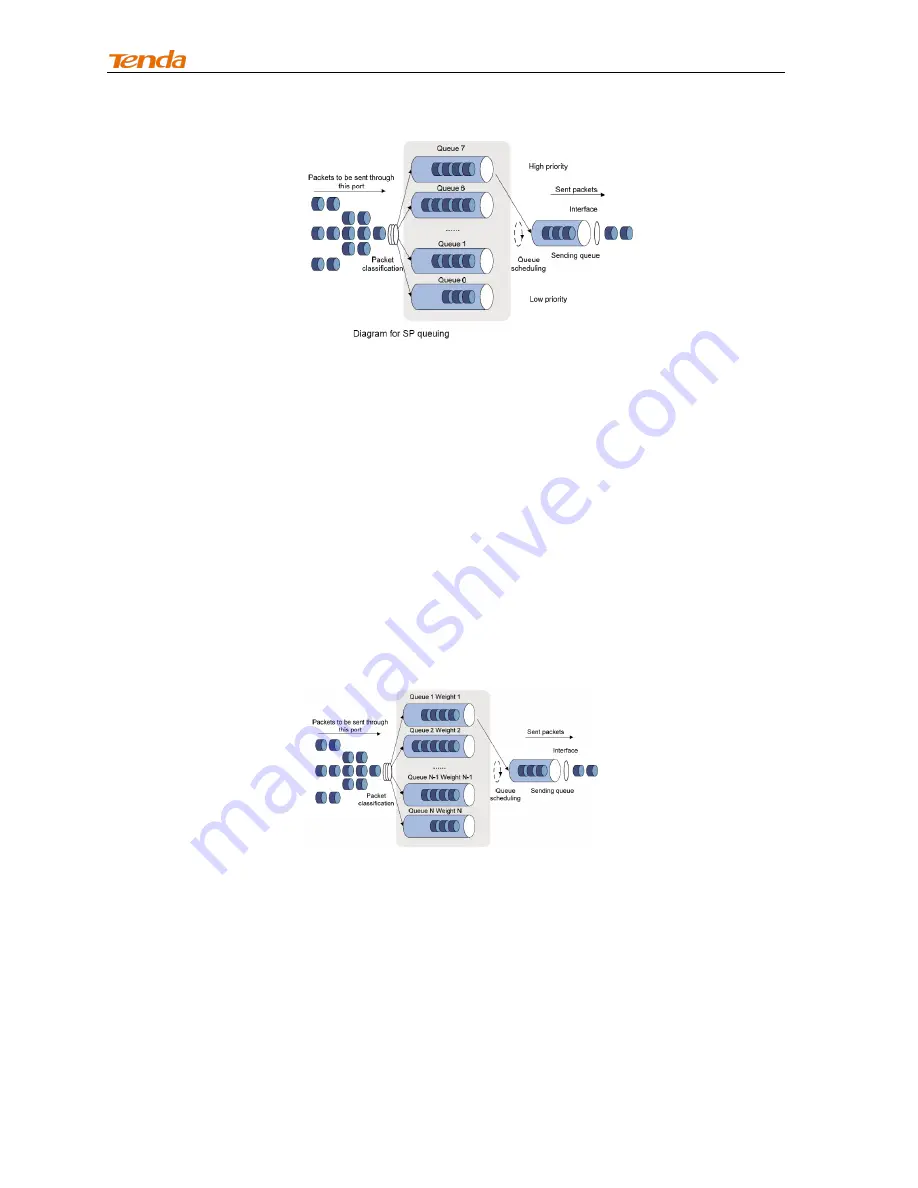
User Guide
158
Strict Priority Queueing is specially designed to meet the demands of critical services or applications.
Critical services or applications such as voice are delay-sensitive and thus require to be dequeued and
sent first before packets in other queues are dequeued on a congested network. For example, 4 egress
queues 3, 2, 1 and 0 with descending priority are configured on a port.
Then under SP algorithm, the port strictly prioritizes packets from higher priority queue over those from
lower priority queue. Namely, only after packets in highest priority queue are emptied, can packets in
lower priority queue be forwarded. Thus High-priority packets are always processed before those of less
priority. Medium-priority packets are always processed before low-priority packets. The lowest priority
queue would be serviced only when highest priority queues had no packets buffered.
Disadvantages of SP: The SP queueing gives absolute priority to high-priority packets over low-priority
traffic; it should be used with care. The moment a higher priority packet arrived in its queue, however,
servicing of the lower priority packets would be interrupted in favor of the higher priority queue or packets
will be dropped if the amount of high-priority traffic is too great to be emptied within a short time.
2
)
WRR
WRR queue scheduling algorithm ensures every queue a guaranteed service time by taking turns to
schedule all queues. Assume there are 4 egress queues on the port. The four weight values (namely, w3,
w2, w1, and w0) indicate the proportion of resources assigned to the four queues respectively. On a 100M
port, if you set the weight values of WRR queue-scheduling algorithm to 25, 15, 5 and 5(corresponding to
w3, w2, w1, and w0 respectively). Then the queue with the lowest priority can be ensured of, at least, 10
Mbps bandwidth, thus avoiding the disadvantage of SP queue-scheduling algorithm that packets in
low-priority queues may not be served during a long time. Another advantage of WRR queue-scheduling
algorithm is that though the queues are scheduled in turn, the service time for each queue is not fixed,
that is to say, when a queue is emptied, the next queue will be scheduled immediately. Thus, bandwidth
resources are fully utilized.
















































